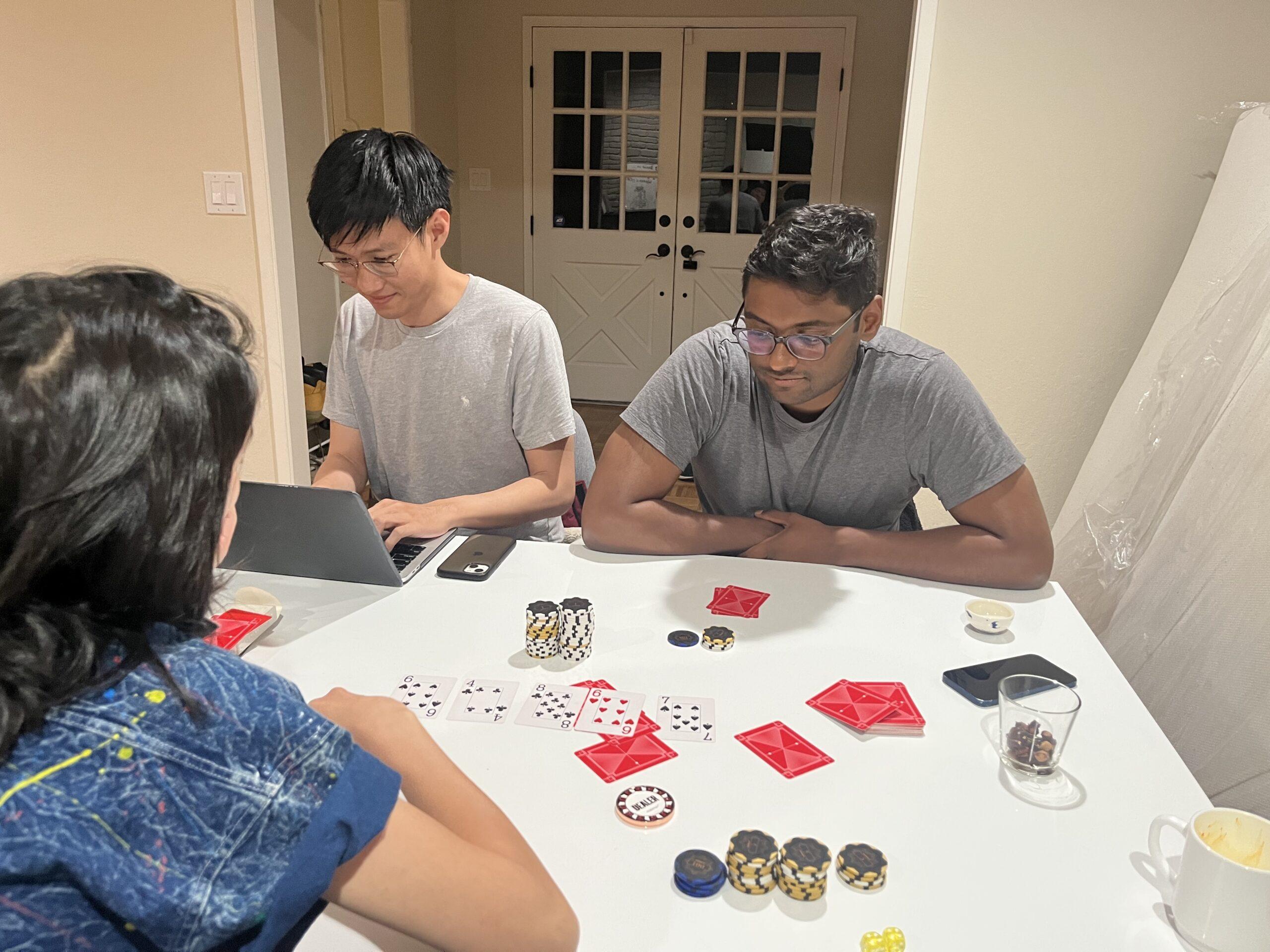Game: Poker
I played a game of poker with 2 other friends in person.
I was really inspired to play poker after reading ‘The Biggest Bluff’, a book by Maria Konnikova, which details her poker journey from a brand-new amateur player (who doesn’t know how many cards there are in a deck) to a professional player playing at the World Series. Meanwhile, she uses poker to explore the complexities of decision-making, uncertainty, and the interplay between skill and luck in life.
Poker is a unique game in that it combines both randomness/chance and an intricate and masterful understanding of probability and game theory. I particularly loved this passage in the book, which perfectly illustrates this point:
“Poker, unlike quite any other game, mirrors life. It isn’t the roulette wheel of pure chance, nor is it the chess of mathematical elegance and perfect information. Like the world we inhabit, it consists of an inextricable joining of the two. Poker stands at the fulcrum that balances two oppositional forces in our lives — chance and control.”
When playing with my friends, they didn’t talk about the element of luck as much as I expected. I figured this is mostly because they are both pretty proficient poker players well-versed in poker probability theories, and hence they played very probabilistically, based on their mathematical calculations.
For example, when one friend (friend A) is deciding whether to call (match his bet) or fold (concede) when faced with a big raise from her opponent (friend B), she delved into a series of mathematical calculations instead of following her gut feelings on whether she will be lucky this time round.

Friend A has the cards A – 8, which gives her the hand of one pair of 8s (8 – 8), which is pretty good since that is the highest pair that can be formed with cards on the board, and A is a high ‘kicker’ card.
Calculating the ratio of the current pot size (how much bet is on the table) to the opponent’s raise, she compared the ratio to the probability that she has the winning hand. She concluded that she only needs to be 40% sure that she has the winning hand to call the hand. She also listed out the possible hands that her opponent might have based on his previous bets at each round of betting, a process in poker known as ‘putting him on a range’. She also analyzed psychologically whether her opponent’s body language seemed to suggest confidence or nervousness, and whether he was bluffing.
She eventually made the decision to call, but unfortunately, friend B had a pair of 5 – 5, which gives him a ‘Straight’ hand (4, 5, 6, 7, 8) which won her ‘one pair’, and she lost her bet. However, she wasn’t super upset about it and didn’t blame her loss on misfortunate, as she knew that she made an informed choice that is based on probabilistic thinking, which would help her win the long-term. As Konnikova describes poker (and life) in her book — “luck is a short‐term friend or foe. Skill shines through over the longer time horizon“.
This game does put people at risk for addiction, partly due to the huge influence that luck plays on game outcomes. The intermittent reinforcement provided by unpredictable outcomes in poker triggers the brain’s reward system, leading to increased dopamine release and contributing to its addictive nature. Moreover, for amateurs, the illusion of skill can mask the role of chance in their victories. However, compared to other gambling games like slot machines, poker does have a greater reliance on skills to excel in the long-term. Responsible play and self-awareness are crucial to maintaining a healthy relationship with the game.



